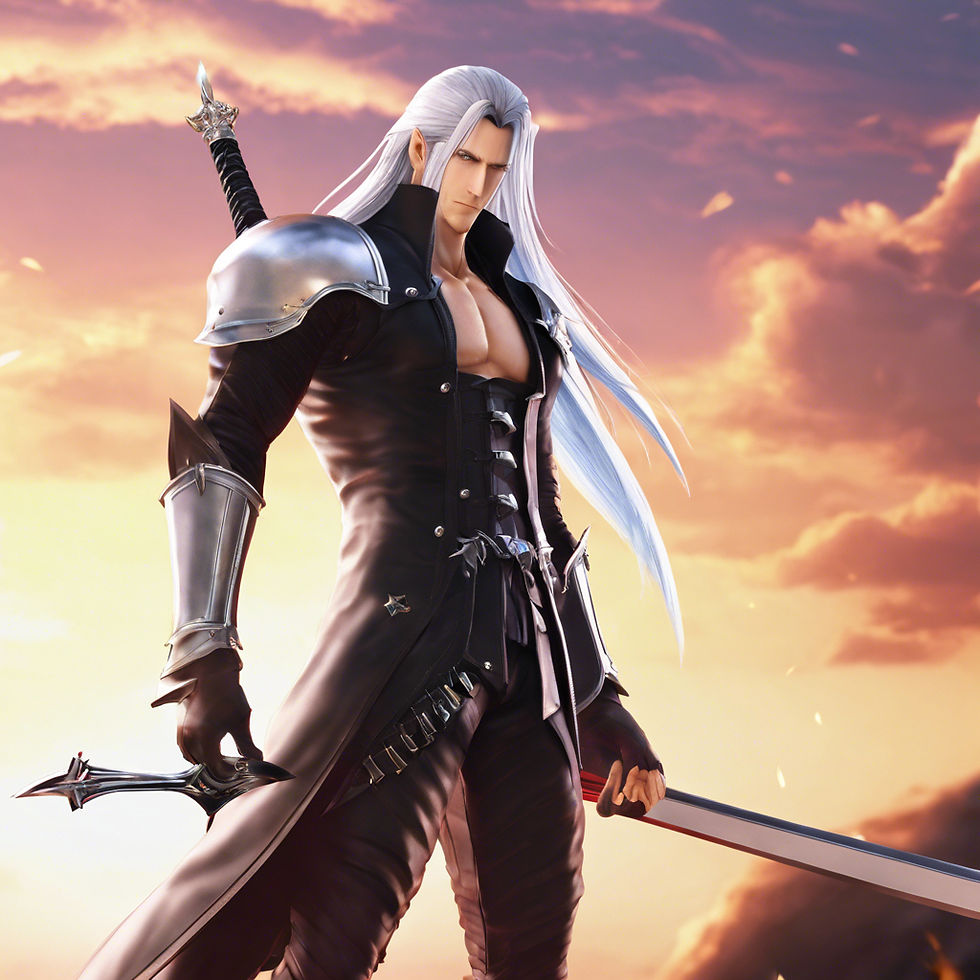Creating Believable Villains: The Art of Writing Antagonists in Games
- Geniuscrate

- Nov 2, 2024
- 4 min read
In the world of video games, a memorable villain can elevate a story from good to unforgettable. Characters like Far Cry 3’s Vaas Montenegro and Final Fantasy VII’s Sephiroth are iconic not just for their intimidating presence but for their complex motivations and layered personalities. Crafting a villain that players love to hate—or even sympathize with—is an art form, requiring a deep understanding of character development and storytelling.

Creating Believable Villains: The Art of Writing Antagonists in Games
Why Villains Matter in Games
Villains serve as the primary antagonistic force in games, providing tension, challenges, and an emotional counterpoint to the hero’s journey. A well-crafted villain does more than just present obstacles; they personify the themes of the story and push the player to reflect on moral and ethical questions. By creating villains with depth and complexity, game writers can make the gaming experience far more immersive and impactful.
The Elements of a Compelling Villain
1. Complex Motivations
A great villain has motives that go beyond simple malice or greed. They often believe their actions are justified or even noble, which makes them more relatable and multidimensional. For example, Sephiroth from Final Fantasy VII believes he’s on a mission of cosmic significance, which drives him to take drastic actions that reflect his own twisted sense of justice. This belief makes him more than just a mere antagonist; it makes him a tragic figure shaped by his own experiences and worldview.
2. Psychological Depth
Villains like Vaas Montenegro from Far Cry 3 showcase the importance of psychological complexity. Vaas, with his iconic line, “Did I ever tell you the definition of insanity?” reflects a chaotic, unpredictable mindset that resonates with players. His erratic behavior makes him terrifying yet fascinating, drawing players into his madness. This level of psychological depth blurs the line between villain and victim, raising questions about how society, environment, or personal trauma can shape someone into a villain.
3. Flaws and Vulnerabilities
A well-rounded villain isn’t invincible. Giving a villain flaws or moments of vulnerability makes them feel more human and less like a distant, untouchable force. In The Last of Us Part II, Abby is an antagonist to Ellie, yet players eventually see her struggles, fears, and motivations, making her a nuanced character rather than a one-dimensional villain. This complexity allows players to connect with the antagonist on a personal level, even if they don’t agree with their actions.
4. Relatable Goals
While villains often act against the protagonist’s objectives, their goals should still feel relatable. A villain who seeks love, respect, power, or revenge mirrors desires that everyone understands, even if their actions are reprehensible. In Bioshock, Andrew Ryan represents the dangers of unchecked ambition and idealism gone awry. His vision of a utopian society appeals to a desire for freedom, but his methods and disregard for humanity turn him into a monster in his own right.
Techniques for Crafting Effective Villains
1. Strong Backstory
An antagonist’s backstory can reveal why they became who they are, making them feel grounded and believable. Many players find themselves sympathizing with villains who have experienced hardship, betrayal, or tragedy. In Far Cry 3, Vaas’s journey is one of descent into madness, shaped by the island’s culture of violence and survival. Such backstories help players understand, if not condone, the villain’s actions.
2. Symbolic Connections to the Hero
Great villains often serve as mirrors to the hero, representing qualities the hero either rejects or could become under different circumstances. Batman and the Joker are classic examples of this duality, each embodying different aspects of chaos and order. In games, such symbolic relationships can add depth to the narrative, as the protagonist’s journey is indirectly shaped by the villain’s influence.
3. Moments of Charisma or Humanity
A villain’s charisma or moments of humanity can make them even more disturbing, as they’re not entirely devoid of positive traits. Charismatic villains draw players in, creating an emotional connection that makes their inevitable downfall more impactful. Characters like Handsome Jack from Borderlands 2 are both charming and horrifying, using humor and wit to manipulate players, creating a push-and-pull dynamic that keeps players engaged.
4. Moral Ambiguity
When villains operate within shades of gray, they challenge players to question what’s truly right or wrong. A morally ambiguous villain blurs the line between good and evil, encouraging players to see things from a different perspective. In The Witcher 3, many antagonists have morally complex motivations, forcing players to make tough choices and confront the consequences of those decisions.
Conclusion:
In crafting believable villains, game writers elevate the medium from simple entertainment to interactive storytelling with emotional resonance. Memorable villains like Vaas, Sephiroth, and Handsome Jack don’t just oppose the protagonist; they challenge the player’s perceptions, provoke empathy, and evoke emotional responses that linger long after the game is over. As game narratives continue to evolve, the art of creating nuanced villains will remain a crucial element in designing immersive, thought-provoking experiences for players.
GeniusCrate specializes in delivering high-quality 3D modeling and game art outsourcing services, enabling studios to create hyper-realistic environments and intricate character models. Our talented artists utilize industry-leading tools like Maya, Substance Painter, Blender, and Unreal Engine to bring your visions to life. You can check out the brilliant modeling by our talented developers here: Genius Crate Hyper-Realistic Modelling, and here Hyper-Realistic 3D game Models.



Comments